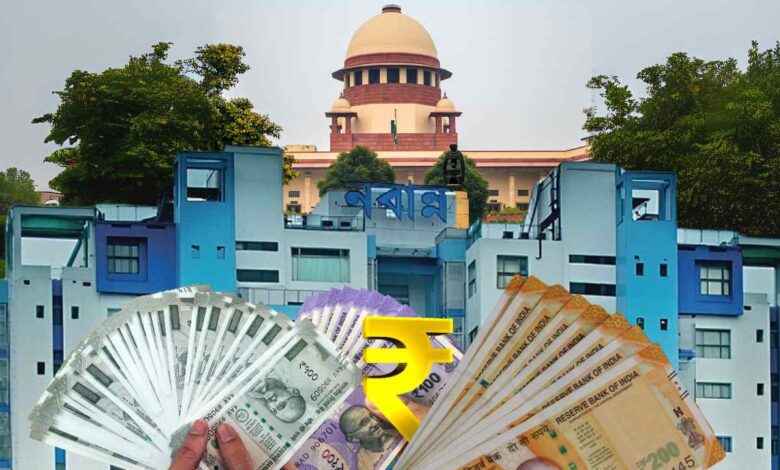Dearness Allowance Case: State Government’s New Affidavit in Supreme Court, Latest DA Case Update

Dearness Allowance Case: The Dearness Allowance (DA) case concerning West Bengal state government employees has taken a new turn. The state government has submitted a written affidavit to the Supreme Court, which will form the basis of its arguments in the upcoming hearing. In this affidavit, the state government has clarified its stance on various contentious issues related to DA. Let’s delve into the key points of this affidavit in detail.
Claims Regarding DA Payments and Arrears
In its affidavit, the state government claims that all employees in West Bengal were paid DA from June 2006 to January 2009. The government has refuted the claims made by various employee organizations that no DA or increment was given during this period.
- The government has presented a detailed chart of DA payments from June 2006 to January 2009, which also mentions the merger of 50% DA into Dearness Pay.
- According to them, there was no gap in DA payments during this period, and all dues have been cleared.
Interpretation of ROPA 2009
The state government has further clarified that the mention of actual payments from April 1, 2008, in ROPA 2009 does not negate the payment of DA prior to that date. According to their argument:
- ROPA 2009 only provides a statutory framework for the revision of the pay structure, but it does not create an entitlement for DA or other allowances.
- The term “existing emoluments” (including basic pay, dearness pay, and dearness allowance) in ROPA 2009 is used for definitional purposes only and does not create any future obligations or entitlements.
Static vs. Dynamic DA
A crucial point mentioned in the affidavit is that the DA under ROPA 2009 is “static, not dynamic.” This means that this DA has no future connection. However, other allowances are considered dynamic and are provided at the state’s discretion.
Get Instant News Updates!
Join on TelegramBasis for DA Fixation
According to the government, the rate of DA is not determined by any specific index or formula. It depends on the state’s financial capacity and fiscal policy.
- The rate of DA is not derived from the index average and will not be based on the revised index average in the future.
- The state is not obligated to match the central government’s DA rates, as the DA rate is decided based on available funds and financial capacity.
Comparison of DA Rates in Other Cities
The government has also attempted to explain why employees in Delhi and Chennai receive DA at a different rate. According to them, the higher cost of living and inflation in these cities result in a higher DA rate. The government also clarified that Chennai adopted the DA rates of the Tamil Nadu government, not the Central Government.
Conclusion
This affidavit from the state government is an attempt to strengthen its position in the DA case. It now remains to be seen how the Supreme Court interprets these arguments and what the verdict of the case will be. The state government employees are eagerly awaiting the final outcome of this case.

